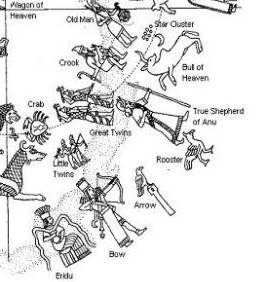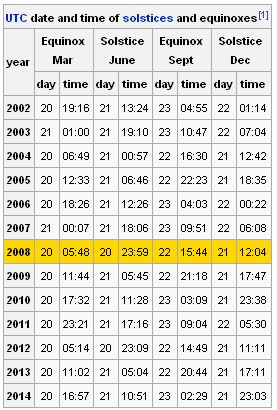178. After a cycle of 31 *
13 = 403 days was completed the rest of side
b could then be devoted to the precessional
time down to the time when Bull's Eye (Ain)
was at spring equinox:
..
A
man had a daughter who possessed a wonderful
bow and arrow, with which she was able to
bring down everything she wanted. But she
was lazy and was constantly sleeping. At
this her father was angry and said: 'Do not
be always sleeping, but take thy bow and
shoot at the navel of the ocean, so that we
may get fire.'
The navel of the ocean was a vast whirlpool
in which sticks for making fire by friction
were drifting about.
At that time men were still without fire.
Now the maiden seized her bow, shot into the
navel of the ocean, and the material for
fire-rubbing sprang ashore.
Then the old man was glad. He kindled a
large fire, and as he wanted to keep it to
himself, he built a house with a door which
snapped up and down like jaws and killed
everybody that wanted to get in ...
Although there were 4 intercalated dark nights
after 'June 3 (6-3) - which was 27 days
before heliacal Sirius in 'June 30 (6-30). Notice the empty eye sockets in
July 1 up to and including July 4 (185) -
perhaps corresponding to the 4 precessional
days down to the time of Gregory XIII:
|
side a |
|
0h |
*1 |
39 |
*41 |
187 |
*229 |
|
no glyph |
 |
 |
 |
|
HYADUM II |
AIN |
NUNKI |
ALRAMI |
|
May 24 (144) |
25
(81 + 64) |
July
4 (185) |
Jan 8 (373 = 309 + 64) |
|
ºMay 20 (140) |
21 (81 + 60) |
SIRIUS |
ºJan
4 (*289 = *229 + 60) |
|
MARCH 21 |
22 (81) |
MAY 1
(121) |
NOV 5 (309 = 80 + *229) |
|
side b |
|
*230 (= *294 - *64) |
16º |
*247 (= *311 - *64) |
154 |
*37 (= *101 - *64) |
 |
 |
 |
|
Gb1-1 |
Gb1-18
(→ 4 * 29½) |
Gb6-20 (402 = 230 + 172) |
|
DENEB OKAB
(*294) |
*311 (= 391 - 80) |
SIRIUS
(*101) |
|
Jan 9 (374 = 310 + 64) |
Jan 26 (391 = 365 + 26) |
June 30 (181 = 177 + 4) |
|
ºJan 5 (370 = 740 / 2) |
ºJan 22 (387 = 365 + 22) |
ºJune 26 (177 = 6 * 29½) |
|
'Dec 13 (→ 12-13 → 156) |
SIRIUS
(364 = 391 - 27) |
6-3
(181 - 27 = 347 + 172 - 365) |
|
NOV 6 (310) |
NOV 23 (327 = 391 - 64) |
*37 = 310 + 172 - 366 - 80 |
|
156 = 12 * 13 |

... At this time of the year we have
special buns, yellow from saffron
and formed like a pair of
interconnected curves. In another
picture is illustrated how in Sweden
December 13 is celebrated with
candles and singing:

Obviously this time of the year once
must have been a kind of
'candlemas'. Precession makes the
dates of celebration move earlier
and earlier, and according to the
Julian calendar December 13 was the
darkest day in the year.
Thus the day of Lucia (who has a
crown of candles in her hair) is
expressing the same idea as
Candlemas. No wonder people in the
street here in Sweden had no
explanation for Kyndelsmäss
- in Sweden the candles are instead
kindled 12 days before
Christmas
Day ...
... But the people knew that he was
in possession of fire, and the stag
determined to steal it for them. He
took resinous wood, split it and
stuck the splinters in his hair.
Then he lashed two boats together,
covered them with planks, danced and
sang on them, and so he came to the
old man's house. He sang: 'O, I go
and will fetch the fire.' The old
man's daughter heard him singing,
and said to her father: 'O, let the
stranger come into the house; he
sings and dances so beautifully.'
The stag landed and drew near the
door, singing and dancing, and at
the same time sprang to the door and
made as if he wanted to enter the
house. Then the door snapped to,
without however touching him. But
while it was again opening, he
sprang quickly into the house. Here
he seated himself at the fire, as if
he wanted to dry himself, and
continued singing. At the same time
he let his head bend forward over
the fire, so that he became quite
sooty, and at last the splinters in
his hair took fire. Then he sprang
out, ran off and brought the fire to
the people ...
 |
|
side b |
|
... The great stone Moai of
Easter Island were at one time
equipped with beautiful inlaid eyes
of white coral and red scoria. In a
number of cases - though not at
Ahu Akivi - sufficient fragments
have been found to make restoration
possible, showing that the figures
originally gazed up at an angle
towards the sky. It is therefore
easy to guess why this island was
once called Mata-Ki-Te-Rangi,
'Eyes Looking at Heaven'. On a
moonlit night its hundreds of
'living' statues scanning the stars
with glowing coral eyes would have
seemed like mythic astronomers
peering into the cosmos. And in the
heat of the day those same eyes
would have tracked the path of the
sun, which the ancient Egyptians
called the 'Path of Horus' or the
'Path of Ra'. This was also the
'path' pursued by the Akhu Shemsu
Hor, the 'Followers of Horus',
for whom the exclamation Ankh'Hor
- 'the god Horus Lives' - would have
been an everyday usage.
The principal astronomical
alignments of the great temple of
Angkor Wat in Cambodia are
towards sunrise on the December
solstice and sunrise on the March
equinox - respectively midwinter and
the beginning of spring in the
northern hemisphere. The two moments
in the year when Easter Island
traditions say that the Moai
of Ahu Akivi come alive and
are 'particularly meaningful' are
the June solstice and the September
equinox - respectively midwinter and
the beginning of spring in these
southern latitudes. Rigorous
archaeoastronomical studies by
William Mulloy, William Liller,
Edmundo Edwards, Malcolm Clark and
others have confirmed that the east
façade of Ahu Akivi does have
a very definite equinoctial
orientation and, indeed, that 'the
complex was designed to mark the
time of the equinoxes' ...
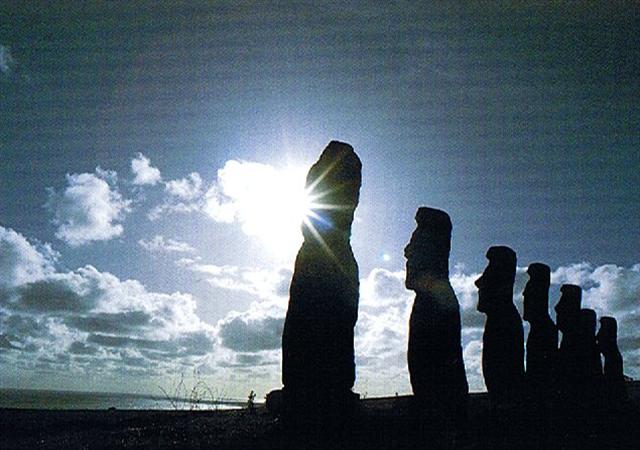 |
 |
 |
 |
 |
|
Gb6-21 (403) |
Gb6-22 |
Gb6-23 |
Gb6-24
(177) |
|
INVISIBLY CLOSE TO THE SUN NORTH OF
THE EQUATOR: |
|
July 1 (*102) |
ALHENA (*103) |
July 3 (184) |
July 4 (181 + 4) |
|
ºJune 27 |
28 (*99) |
29 (180) |
SIRIUS
(*101) |
|
'June 3 (*75 = *102 - 27) |
4 (156 =
183 - 27) |
5 |
6 |
|
... Nut, whom the Greeks sometimes
identified with Rhea, was goddess of
the sky, but it was debatable if in
historical times she was the object
of a genuine cult. She was Geb's
twin sister and, it was said,
married him secretly and against the
will of Ra. Angered, Ra had the
couple brutally separated by Shu and
afterwards decreed that Nut could
not bear a child in any given month
of any year. Thoth, Plutarch tells
us, happily had pity on her. Playing
draughts with the Moon, he won in
the course of several games a
seventy-second part of the Moon's
light with which he composed five
new days. As these five intercalated
days did not belong to the official
Egyptian calendar of three hundred
and sixty days, Nut was thus able to
give birth successively to five
children: Osiris, Haroeris (Horus),
Set, Isis and Nepthys ... |
|
... When Aries took over after
Taurus - i.e. when western civilization had to be rebuilt again
after the devastation caused by the
Santorini explosion around 1650 BC -
Aldebaran was no longer rising with
the Sun at the equinox, and the
distance from Bharani (*41) to
Aldebaran (*68) was 27 days.
Likewise did Antares no longer rise
with the Sun at the southern equinox
but in day 265 + 27 = 292 (= 4 * 73
= 365 - 73).
However, by using the faulty
Gregorian calendar - not corrected
for the 4 extra precessional days
before the Council of Nicaea in 325
AD - the date Tagaroa Uri 15
had to be 4 days earlier in the C
text than at day 292. Counted from
0h this became 292 - 4 = 288 (= 2 *
144 = 12 * 24 = 8 * 36 = 4 * 72 =
360 - 72), which was in full
agreement with the date Gregory XIII
had decided to use for launching his
'crooked canoe' (calendar):
 |
 |
 |
 |
 |
 |
|
Ga7-14 |
Ga7-15 |
Ga7-16 (185) |
Ga7-17 |
Ga7-18 |
Ga7-19 |
|
INVISIBLY CLOSE TO THE SUN
NORTH OF THE EQUATOR: |
|
|
|
ANTARES |
|
|
|
|
Nov 23 |
24 |
(329 = 325 + 4) |
26 (*250) |
27 |
28 |
|
°Nov 19 |
20 |
21 (325) |
22 (*246) |
23 |
24 |
|
'Oct 27 (300) |
28 |
29 (*222) |
30 |
31 (= 17 + 14) |
'Nov 1 |
|
"Oct 13 |
14 |
Tagaroa Uri 15 |
16 (*209) |
17
(290) |
18 |
|
SEPT 20 |
21 (*184) |
EQUINOX |
23 |
24 |
25 (268) |
... Gregory XIII launched his
'crooked canoe' in °October 15 (288
= 2 * 144) and this date of birth
was suitable also for the arrival of
the Sun King to Easter island
...
... The canoes of Ava Rei Pua
and of Hotu were seen near
the (off-shore) islets. On the
fifteenth day of the month of
October (tangaroa uri)
the canoe of Hotu and the
canoe of Ava Rei Pua
landed. On the fifteenth day of the
month of October (tangaroa
uri), Nonoma left the
house during the night to urinate
outside. At this point Ira
called out to Nonoma, 'Look
at the canoe!' Nonoma ran, he
quickly went to Te Hikinga Heru
(a ravine in the side of the crater
Rano Kau) and looked around.
There he saw the double canoe way
out near the (offshore) islets, and
the two (hulls of the canoe) were
lashed together. He ran and returned
to the front of the house. He
arrived and called into the house:
'Hey you! This canoe has arrived
during the night without our
noticing it!' Ira asked
Nonoma, 'Where is the canoe,
which you say is lying out there (in
the water)?' Nonoma's voice
came back: 'It is out there (in the
water) close to the (offshore)
islets! There it lies, and the two
(hulls) are lashed together.' The
four of them (corrected for 'the six
of them') went out and picked up
leaves (on branches) to give
signals. They picked them up, went
and arrived at Te Hikinga and
saw the canoe. Raparenga got
up, picked up the leaves, took them
in his hands, and waved, waved,
waved, waved
... |
My dates
above are extrapolations in
a way which could have been
used by everyone, based on
the equation 71 years = 1
right ascension day, for
instance 16 (JANUARY 16) =
80 (March 21) - *64, i.e. with
26000 years (cycle of the
precession) / 365¼
(Julian year) =
approximately 71 (= 355 / 5).
If a
calendar at the time of Aldebaran had been based
not on the true heliacal positions of the
stars but on the dates when they returned to
visibility, then my date JANUARY 16 above
should indicate the true heliacal star
position would have been 16 days earlier, viz.
in DECEMBER 31.
... The Sothic cycle was based on what is
referred to in technical jargon as 'the
periodic return of the heliacal rising of
Sirius', which is the first appearance of
this star after a seasonal absence, rising
at dawn just ahead of the sun in the eastern
portion of the sky. In the case of Sirius
the interval between one such rising and the
next amounts to exactly 365.25 days -
a mathematically harmonious figure,
uncomplicated by further decimal points,
which is just twelve minutes longer than the
duration of the solar year
...
And
then, at
that ancient time the true heliacal date
corresponding to March 20 (79) would have
been 79 - 64 - 16 = -1 = 366 - 1 = 365. At
the time of rongorongo precession had moved
the stars 64 + 16 = 80 right ascension days
ahead since the beginning. But the Gregorian calendar was 4 days
out of tune with the stars and therefore the
correct precessional movement should be
estimated as 80 + 4 = 84 days - i.e. down to
the time of
Betelgeuze. However, should we count from 0h
(March 21) this beginning of time ought to
have been at heliacal Praja-pāti
(Lord of Created Beings, δ Aurigae):
... δ,
4.1, yellow, is on the head of the
Charioteer. It is unnamed with us, but,
inconspicuous as it is, the Hindus called it
Praja-pāti, the Lord of Created
Beings, a title also and far more
appropriately given to Orion and to Corvus.
The Sūrya Siddhānta devotes
considerable space to it; but 'why so faint
and inconspicuous a star should be found
among the few of which Hindu astronomers
have taken particular notice is not easy to
discover.' ...
|
*2 |
*3 |
*4 |
ANKAA
(α Phoenicis) |
*6 |
 |
 |
 |
 |
 |
|
Gb6-27 |
Gb7-1 |
Gb7-2 |
(→ 14 * 29½) |
Gb7-4 (414) |
|
March 23 |
24 |
3-25 (84) |
26 (1 + 84 = 85) |
27 |
|
JAN 18 |
19 |
20 |
21 |
22 |
|
364 |
365 |
366 |
1 (= *5 - 4) |
2 (= 22 - 20) |
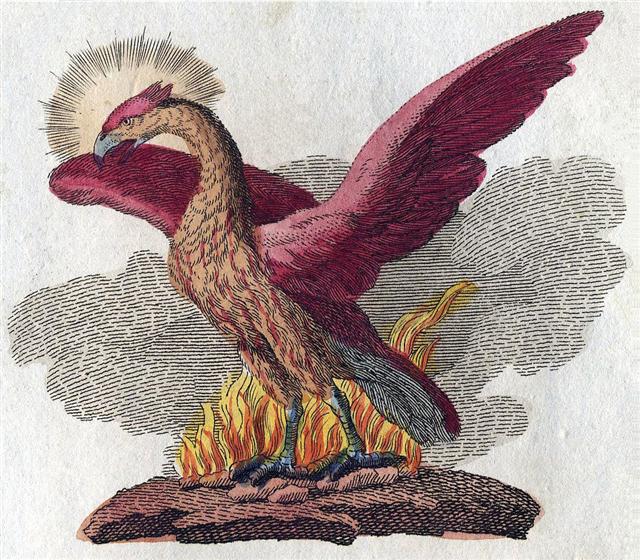 |
The glyph type at heliacal Ankaa (in day
1 after the Julian equinox) was
tamaiti:
 |
 |
|
tamaiti |
Gb7-3 |
|
Tama.
1. Shoot (of plant), tama
miro, tree shoot; tama
tôa, shoot of sugarcane. 2.
Poles, sticks, rods of a frame.
3. Sun rays. 4. Group of people
travelling in formation. 5. To
listen attentively (with ear,
tariga, as subject, e.g.
he tama te tariga);
e-tama rivariva tokorua tariga
ki taaku kî, listen
carefully to my words.
Tamahahine, female.
Tamahine (= tamahahine),
female, when speaking of
chickens: moa tamahine,
hen. Tamâroa, male.
Vanaga.
1. Child. P
Pau.: tama riki, child.
Mgv.: tama, son,
daughter, applied at any age.
Mq.: tama, son, child,
young of animals. Ta.: tama,
child. Tamaahine (tama
1 - ahine), daughter,
female. Tamaiti, child P
Mq.: temeiti, temeii,
young person. Ta.: tamaiti,
child. Tamaroa, boy,
male. P Mgv.: tamaroa,
boy, man, male. Mq.: tamaóa,
boy. Ta.: tamaroa, id. 2.
To align. Churchill.
In the
Polynesian this [tama na,
father in the Efaté language] is
distinguished from táma
child by the accent tamā
or by the addition of a final
syllable which automatically
secures the same incidence of
the accent, tamái,
tamana
... Churchill 2 |
|
... take thy bow and shoot at
the navel of the ocean ...
 |
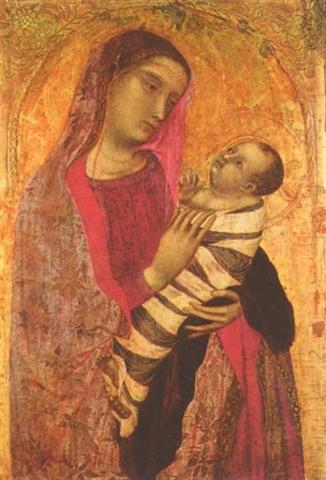
Moving 85 precessional days down and ahead
we will find the Lord of Created Beings at
Ga1-25 (and we can imagine a pair of boats
lashed together where the Sun fire created a
Rainbow):
 |
 |
 |
 |
 |
|
Ga1-22 |
Ga1-23 → 403 - 280 |
Ga1-24 |
Ga1-25 → 5 * 5 * 5 |
Ga1-26 |
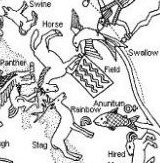 |
|
μ Columbae,
SAIPH
(Sword) = κ Orionis
(86.5), τ Aurigae, ζ Leporis
(86.6) |
υ Aurigae (87.1), ν Aurigae
(87.2),
WEZN
(Weight) = β Columbae,
δ Leporis (87.7),
TZE (Son) = λ Columbae
(87.9) |
Ardra-6 (The Moist One) /
ANA-VARU-8 (Pillar to sit
by)
χ¹ Orionis, ξ Aurigae (88.1),
BETELGEUZE
= Α Orionis
(88.3), ξ Columbae (88.5), σ
Columbae (88.7)
ZUBEN ELGENUBI (α Librae)
|
η Leporis (89.0),
PRAJA-PĀTI
= Δ Aurigae,
MENKALINAN = Β Aurigae, MAHASHIM
= Θ Aurigae, and Γ Columbae
(89.3), π Aurigae (89.4), η
Columbae (89.7) |
Μ Orionis (90.3), χ² Orionis
(90.5) |
|
June 15 |
16 |
17 (168) |
18 |
19 |
|
°June 11 |
12 |
13 (164) |
14 |
15 (*86) |
|
'May 19 |
20 |
21 (141) |
22 |
23 (*63) |
|
"May 5 |
6 |
7 (127) |
8 |
9 (*49) |
|
APRIL 12 |
13 |
14 (104) |
15 |
16 (*26) |
|
82 |
83 |
84 (= 12 * 7) |
85 (= 5 * 17) |
86 |
 |
The 8th (varu)
Tahitian star pillar was Betelgeuze and
here was the Babylonian Crook,
visualized as a man sitting down, hence
the added information - a pillar to sit
by:
... Here he seated himself at the
fire, as if he wanted to dry himself,
and continued singing. At the same time
he let his head bend forward over the
fire, so that he became quite sooty, and
at last the splinters in his hair took
fire. Then he sprang out, ran off and
brought the fire to the people ...

|

